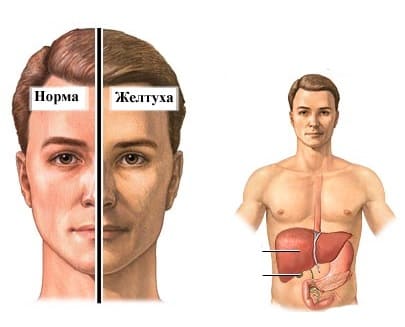24 Hour Emergency
Open 24/7 for convenience, quick and easy access
Call us
+998 99 017-36-825/1 Building, 1 District, Chilanzar District
Tashkent, UzbekistanMon-Fri: 09:00-18:00: Sat: 09:00-15:00.
info@gmed.uz




Obstructive jaundice is a symptom complex that occurs when there is a violation of the outflow of bile through the bile ducts due to their blockage or compression. The main symptoms are yellow staining of the skin, sclera and visible mucous membranes, discoloration of feces and darkening of urine, which is associated with an increase in the level of bilirubin in the blood.
Normally, bilirubin should be excreted with bile into the lumen of the duodenum, however, if there is an obstacle to the outflow of bile, it enters the bloodstream and has a toxic effect on the entire body.
Benign obstructive jaundice appears against the background of the development of an inflammatory process in the liver and biliary tract due to infection with choledocholithiasis parasites.
Cicatricial structures appear in the biliary tract, a benign formation develops in the duodenal papillae of the ducts.
The cause of the development of malignant pathology is the localization of tumor-like cancerous neoplasms in the gallbladder, pancreas or duodenal papillae. Due to stagnation of bile, metabolic disorders, gallstone disease develops.
Blockage of the biliary tract, the development of inflammatory processes can be triggered by such diseases: pancreatitis, cholecystitis, abnormal structure of the tract or duodenum (occurs in newborns due to infection with hepatitis from the mother).
Blockage of the bile ducts with stones inevitably leads to:
-pain in the hypochondrium on the right;
-sharp spasms radiating to the back, right armpit, chest;
- tenderness of the liver on palpation;
- severe itching on the skin;
- nausea and vomiting;
- loss of appetite and weight;
- an increase in body temperature;
- the appearance of loose stools, dark or, conversely, discolored;
- yellowness of the skin or the appearance of an earthy hue;
- not probing the gallbladder during palpation;
- passing urine of dark color;
- hepatic colic in the acute stage;
- an increase in the liver with the development of a malignant process, the appearance of a nodular structure.
What should be done in a patient with jaundice? Question number one is to quickly clarify the situation and make a diagnosis. The fact is that jaundice is not a diagnosis, it is only a statement of the fact of yellow staining of the skin. Jaundice is always a consequence of some other disease. Here is to find the cause of jaundice and means to establish a diagnosis. The simplest classification of jaundice is to divide it into three types:
- mechanical jaundice - a consequence of the presence of a mechanical obstruction in the bile ducts (for example, a stone or tumor);
- parenchymal jaundice - a consequence of damage to the parenchyma, or liver tissue (example - cirrhosis of the liver, or hepatitis);
- hemolytic jaundice - a consequence of hemolysis, increased destruction of red blood cells. At the same time, hemoglobin from destroyed cells is converted in large quantities into bilirubin, the liver cannot cope with excess bilirubin, and it begins to stain the skin.
The task is to understand what kind of jaundice belongs to this particular patient. This is important because the treatment is completely different. Surgeons deal only and exclusively with obstructive jaundice. Parenchymal and hemolytic jaundice are of interest to therapists.
Treatment of patients with breast cancer should be complex. Conservative measures, in addition to the normalization of homeostasis and infusion therapy, include the following measures:
- removal of toxic substances from the body. This is achieved by forced diuresis, as well as the introduction of gemodez and similar drugs;
- the introduction of plastic substances necessary for the reparative processes of the hepatic parenchyma. In this case, two main points must be borne in mind: firstly, until the elimination of biliary hypertension, plastic substances are absorbed by hepatocytes poorly and in small quantities; secondly, overloading the patient's body with them before restoring the normal outflow of bile makes increased demands on hepatocytes and, as a result, can cause a breakdown in adaptation processes and worsen liver function. In this regard, plastic substances should be prescribed in doses at the level of the minimum therapeutic (if cholecysto- or cholangiostomy has not been previously performed) and not for too long courses (up to 7-10 days). This group of drugs includes sodium nucleinate and other purine and pyrmidine bases: metacin, pentoxyl, potassium orotate, etc.;
-improvement of metabolism in hepatocytes. For this purpose, it is advisable to introduce ATP, coenzyme A, a complex of B vitamins, ascorbic acid, mexidol, etc. To normalize the reduced level of blood coagulation factors, the prothrombin complex, the introduction of vikasol is mandatory;
-use of anabolic hormones. Doses of drugs should not be large so as not to cause disruption of compensatory processes in hepatocytes. Hyperbaric oxygen therapy, which is effective only after the elimination of biliary hypertension, should be cautioned against.
You can safely start treatment, which we carry out as quickly and efficiently as possible in Tashkent. The Gatling Med clinic will make you feel confident in yourself and in your health.
Open 24/7 for convenience, quick and easy access
Qualified and certified doctors for quality healthcare
Cost effective, comprehensive and clinical laboratory services
